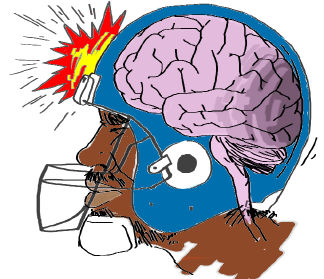
As more football players donate their brains for study, the alarming prevalence of Chronic Traumatic Encephalopathy, the Alzheimer’s-like disease that plagues many current players and retirees, has troubled the sports community and galvanized research on this lesser known illness.
Chronic Traumatic Encephalopathy, or CTE, is generally presented in the context of professional football and boxing. However, it also a risk faced by military men and women, headbangers, and other recipients of the estimated 1.6-3.8 million sports related Traumatic Brain Injuries (or TBI’s) that happen yearly in the United States.
The symptoms of the grave disease range from depression to motor problems, and reflect the deficits in regions of the brain that undergo neuronal loss and subsequent tau protein accumulation as a result of a range of pathogenic pathways initiated by the trauma.
Until recently postmortem immunochemistry to identify tau proteins was the standard for CTE research, limiting our understanding because the subject must be dead and his or her brain donated and sectioned. Recently a group of researchers at the Semel Institute developed a PET scan procedure that detects the telltale tau proteins in a living subject.
Although findings are still preliminary, this new research may help us understand the progression of the disease, identify and treat high risk athletes, and add urgency to the search for ways to protect our brains.